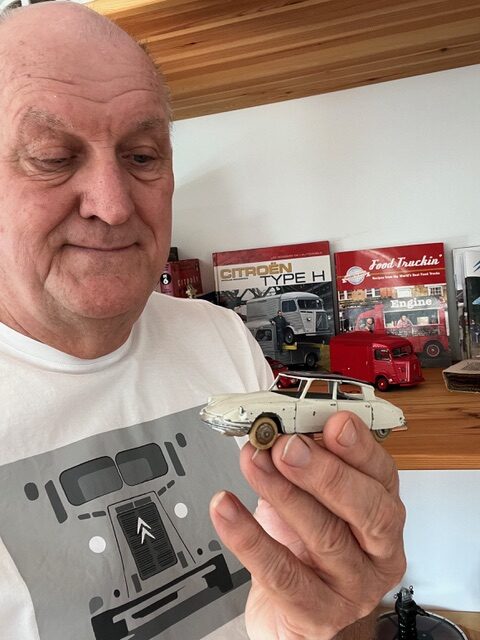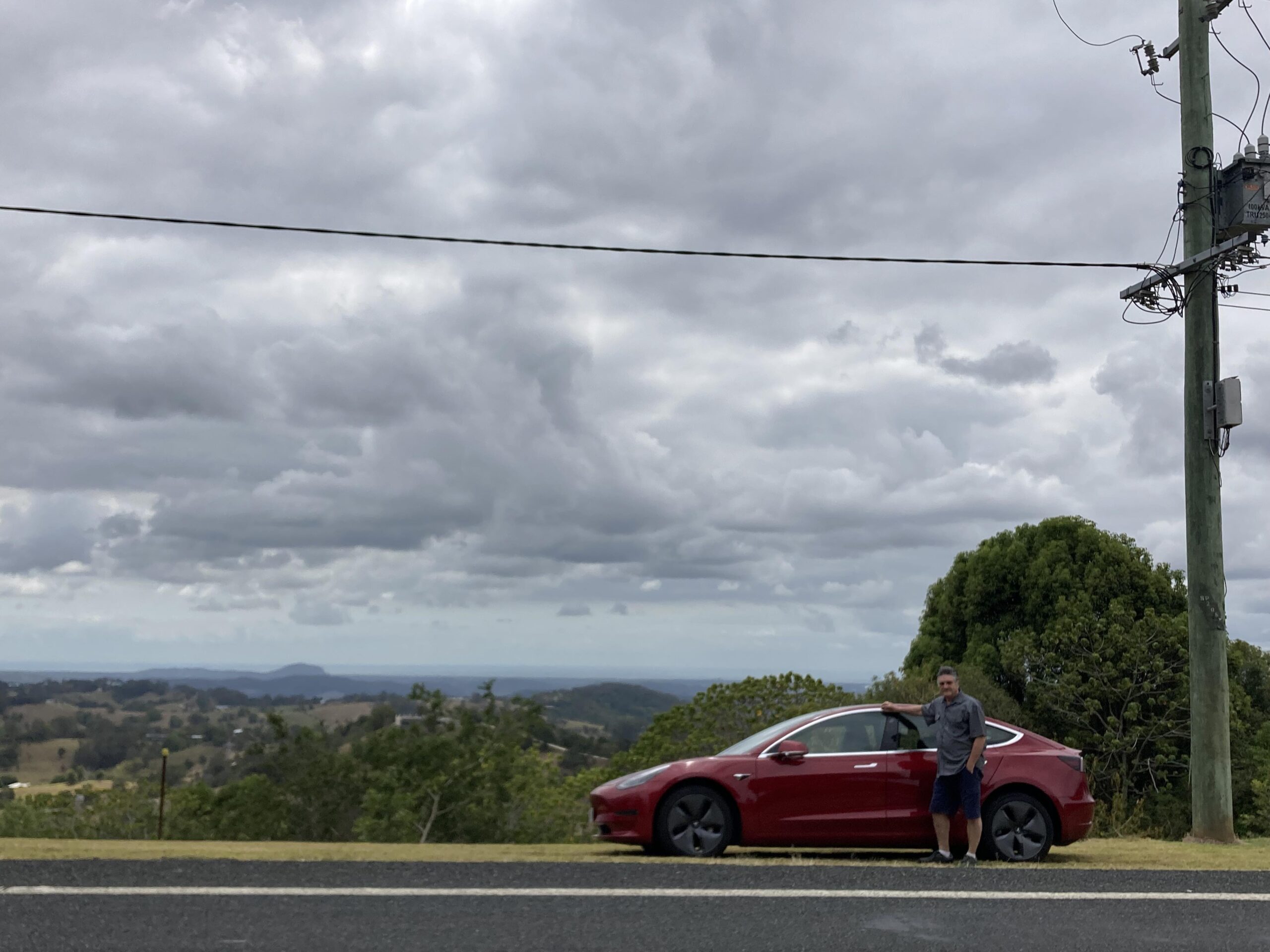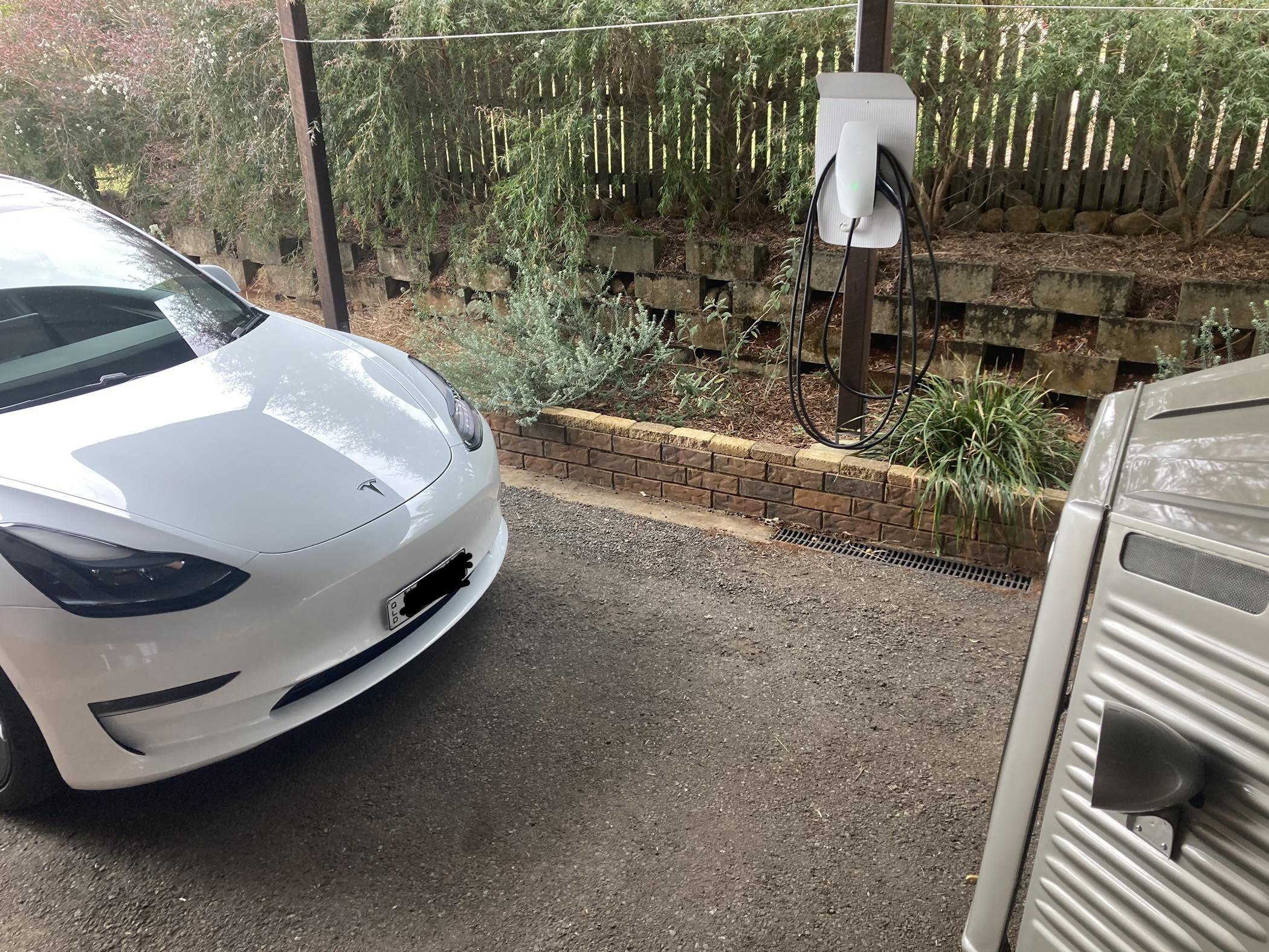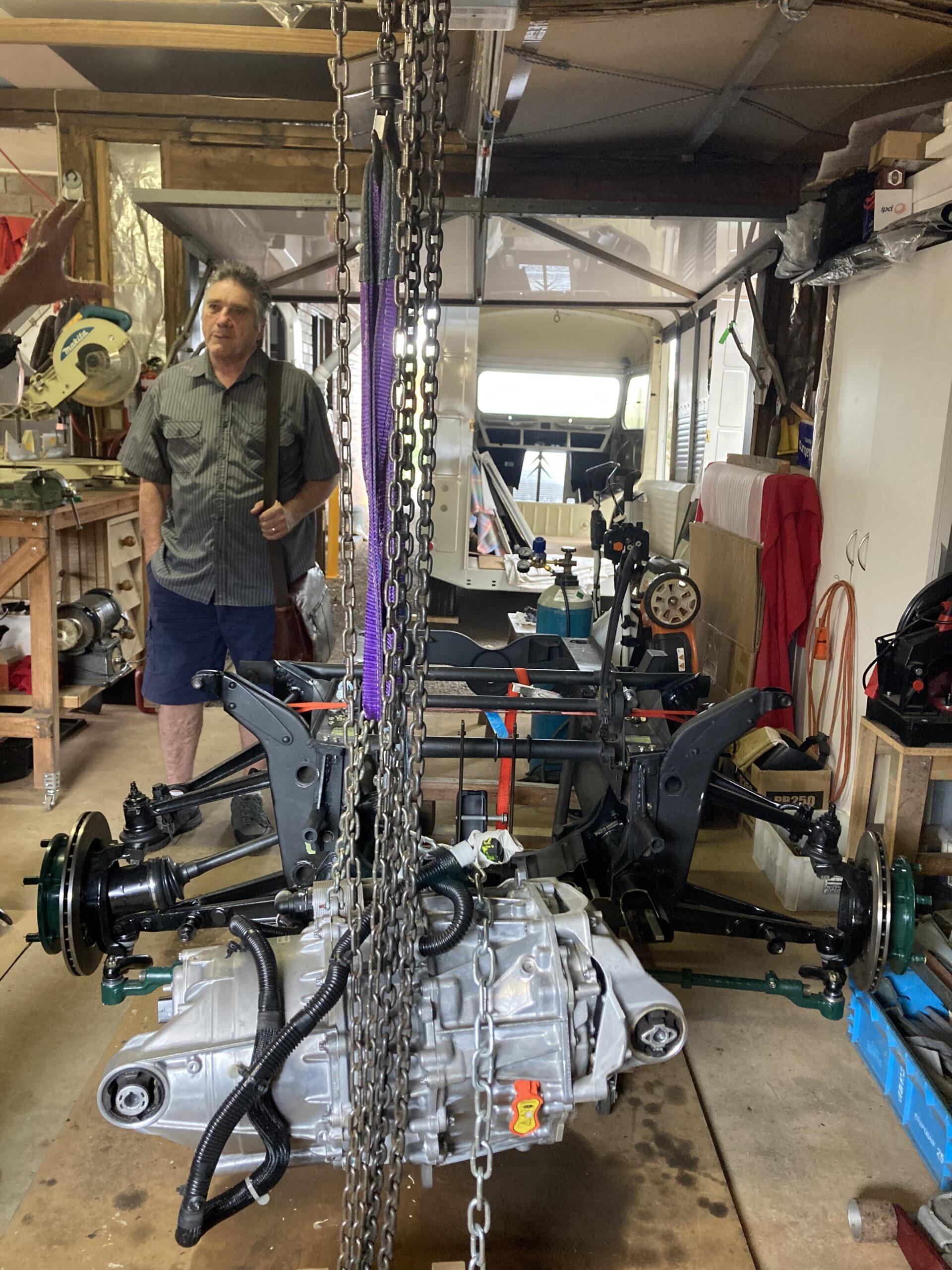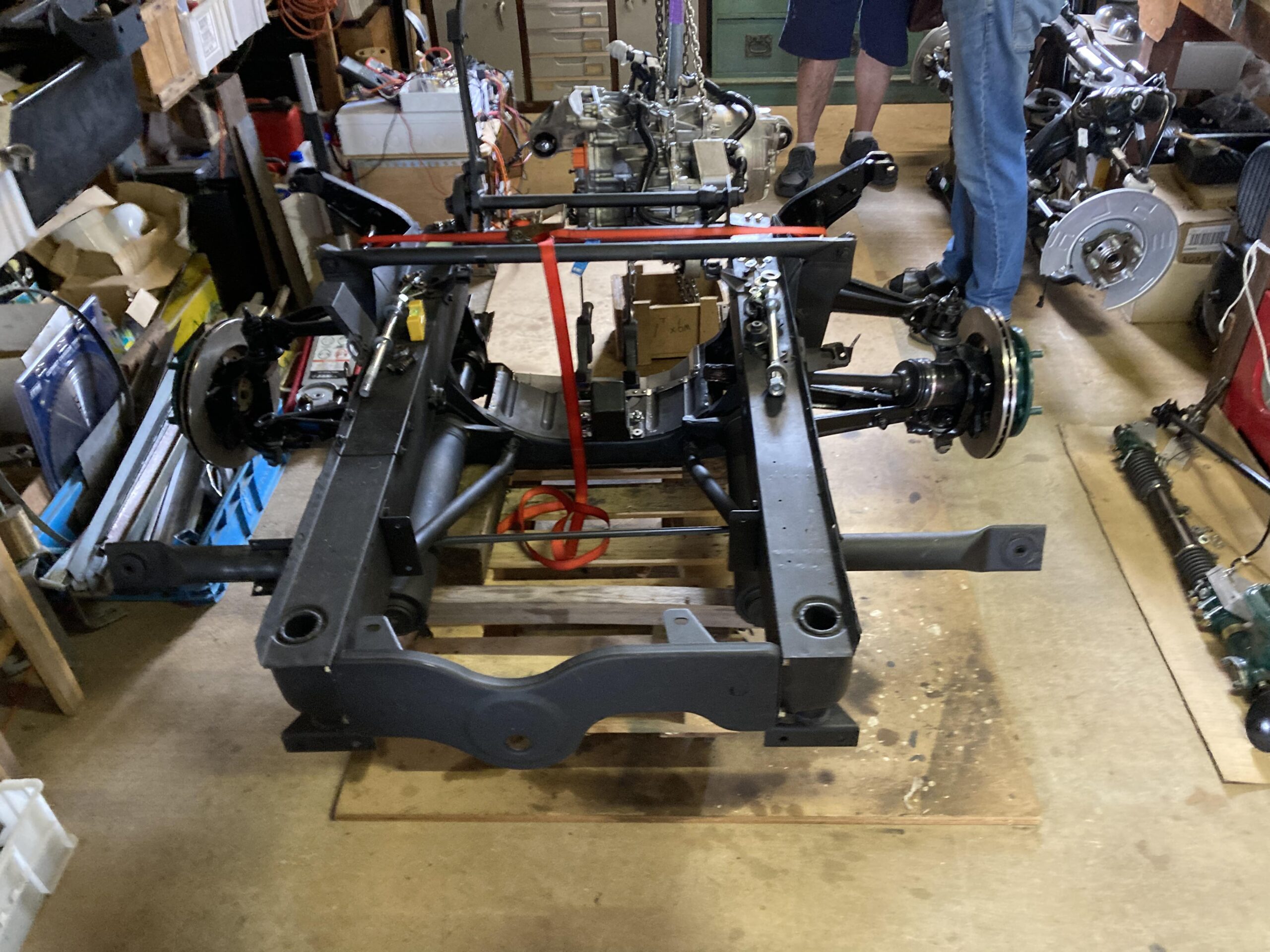Sign up for daily news updates from CleanTechnica on email. Or follow us on Google News!
In a workshop at the top of the range in the Sunshine Coast hinterland, Phil Ward is performing a labour of love: restoring and electrifying his Citroen H van from 1969.
He tells me that he has been interested in Citroens since he was 8 years old — when he bought his first toy Citroen model. As an adult, he has owned and driven most models, starting with a DS. His white Tesla Model 3 is the first non-Citroen car he has bought. “Mind you, with the money I have spent doing up the van, I could have bought a couple more Teslas,” he confided.
For the past two years, he has laboured in the garage next to his house totally stripping back and rebuilding the van. He has even recovered the leather seats. The van has a great view, looking north over Mt Cooroy and views to the ocean. The van sits behind the Tesla Model 3 and next to the Tesla battery. Phil is a designer with an eye for quality. We chatted, drank coffee, and listed to jazz on his Bang & Olufsen sound system. He is also a qualified mechanic, auto electrical technician, designer, and jewelry maker.
He tells me the history of his beloved van. He bought the van in 1979. It had been driven around the world before it came to Australia. He then restored it and drove it for 15 years. The van was then sold to a neighbour, who didn’t actually use it, so it sat in the driveway for 29 years. He watched it deteriorate until he could stand it no longer and pestered the neighbour until he sold the van back to him. The van was then shipped from Adelaide to Queensland, where Phil had now settled.
Sandblasting revealed that every panel had rust in it, so Phil ordered new ones from Germany. “Why not France,” I asked. Phil tells me that Germany is very big on DIY and restoration.
Citroen made H vans from 1948–1981. The side panels reminded me of steel garbage cans. Phil didn’t take offense but informed me that their design was inspired by “Luftwaffe” Junkers airplanes — strong and light.
Phil has his electric motor ready to install. It came from a wrecked, low-mileage 2021 Tesla Model 3. He is now looking for a charging system and a Tesla battery to power the van. Installing the battery will be the last job. He has plenty of space for the battery and he is considering his options. He is aiming for about 400 km of range. The H van is not aerodynamic — “it’s a square brick and it will make a great camper.”
Phil and his wife Wendy are planning to move closer to the coast in the next 12 months. He hopes to be able to get the subframe installed so the van is easier to move. He’ll need a good amount of workshop space at the new address.
I asked Phil what was the most difficult part of the process. “Orienting the Tesla motor in the frame. It has to be put in backwards.” His google search did not turn up any information, so he pulled the motor apart and rejigged it. “I had to fool the motor into thinking it was going forwards when it was in reverse.” He left the electronics untouched but had to swap the
phases over on the stator and change the wiring on the resolver — motor position sensor. It’s a whole ton of work. I asked why he’s doing it. “I love Citroens, I love the H van, and I love electric!”
Phil has always loved design and pulling things apart. At the age of 8, he fell in love with the shape of the Citroen DS and bought a model car from Myers department store. He then sought out more information. He even inspired his father to get involved — buying the local Citroen dealership. Young Phil could now surround himself with his favourite car. He believes that Citroen combined advances in technology with creative designs, citing the hydraulics on the DS in the mid-fifties as an example. He compares the early DS models to Tesla vehicles — simple design (e.g., frameless windows) combined with cutting edge technology.
I asked the obvious question — why not an electric Citroen instead of the Tesla Model 3? “They haven’t come out to Australia yet, and I couldn’t wait.” Also, “The user interface and the range are not as good as Tesla.” Phil tells me he checked out all the EVs currently available in Australia and found Tesla to be the best.
At one point, Phil had a shed full of Citroens — 7 of them. He had considered converting one of these to electric, but felt that they were in too good a condition. “I didn’t want to muck them up.” Many owners looking at converting their classic cars feel the same way. The H van was so rusty that the rebuild meant it was no longer original. “So I can do what I like.”
We had a good look at his workshop and the deconstructed H. There was the body shell, the chassis (he tells me this is all that was left of the original van), and the Tesla motor with a foot pedal attached so it could be tested. “I’m just making things up as I go,” he explains. The H van is basically a delivery vehicle but is lightweight, strong, and handles well. It can take being modernised with an electric motor — power brakes with discs on the fronts and electric power steering.
The T2-C controller for the motor has come from the company EV Controls in Canada via Western Australian distributor Lithium Power. EV Controls was most helpful in setting up the controller — communication needed to be early morning or late night due to the time zone differences. The data link in the controller enabled EVC to see what was happening. The H van is basically controlled by an app on an iPad.
I broached what I thought was a delicate subject and asked how much time he was spending on this project and how Wendy felt about it. It turns out, she is fully supportive and also a big fan of Citroen. Wendy and Phil met at a national Citroën rally — Phil driving across from South Australia met Wendy with her Light 15 in Queensland. Their common interests not only include Citroens, but also protecting the environment.
I have already booked a return visit to see the progress that Phil has made on his car, but it might be a few years before it is finished.
Also note that I have covered restorations before.
Have a tip for CleanTechnica? Want to advertise? Want to suggest a guest for our CleanTech Talk podcast? Contact us here.
EV Obsession Daily!
I don’t like paywalls. You don’t like paywalls. Who likes paywalls? Here at CleanTechnica, we implemented a limited paywall for a while, but it always felt wrong — and it was always tough to decide what we should put behind there. In theory, your most exclusive and best content goes behind a paywall. But then fewer people read it!! So, we’ve decided to completely nix paywalls here at CleanTechnica. But…
Thank you!
Community Solar Benefits & Growth
CleanTechnica uses affiliate links. See our policy here.

